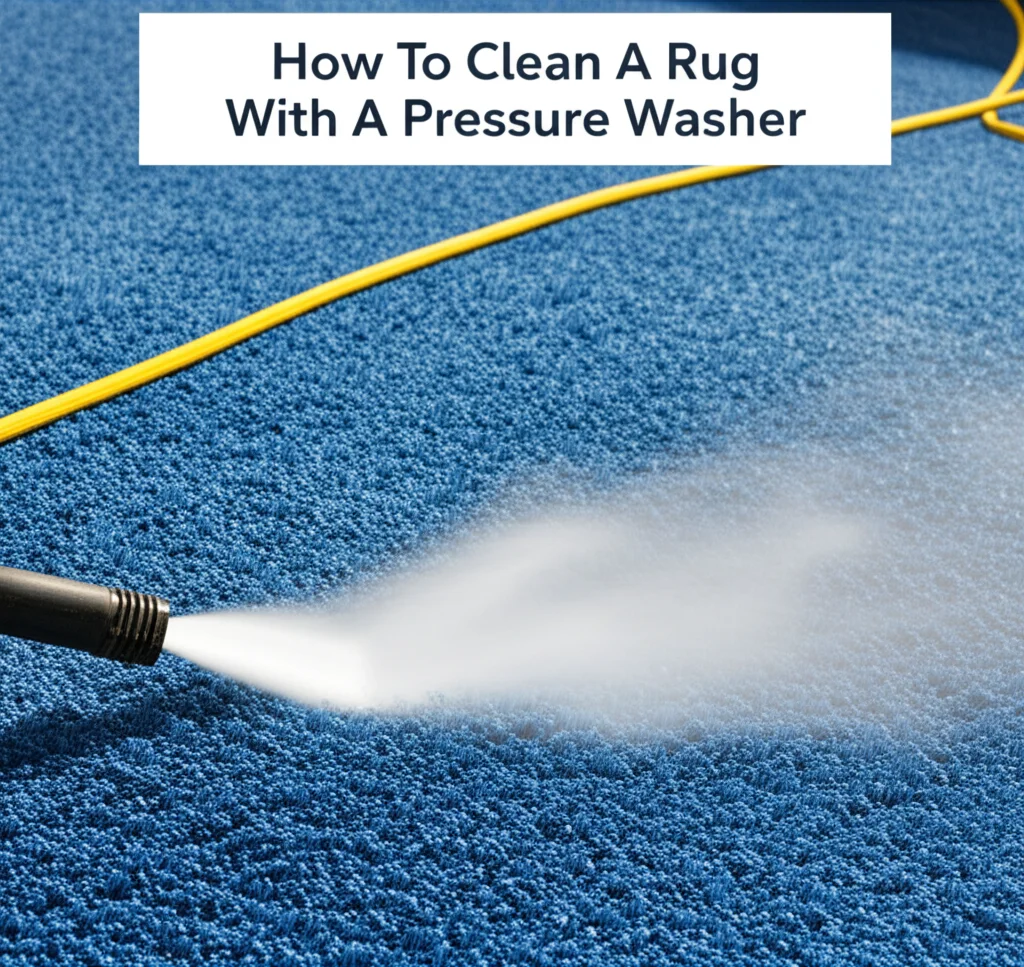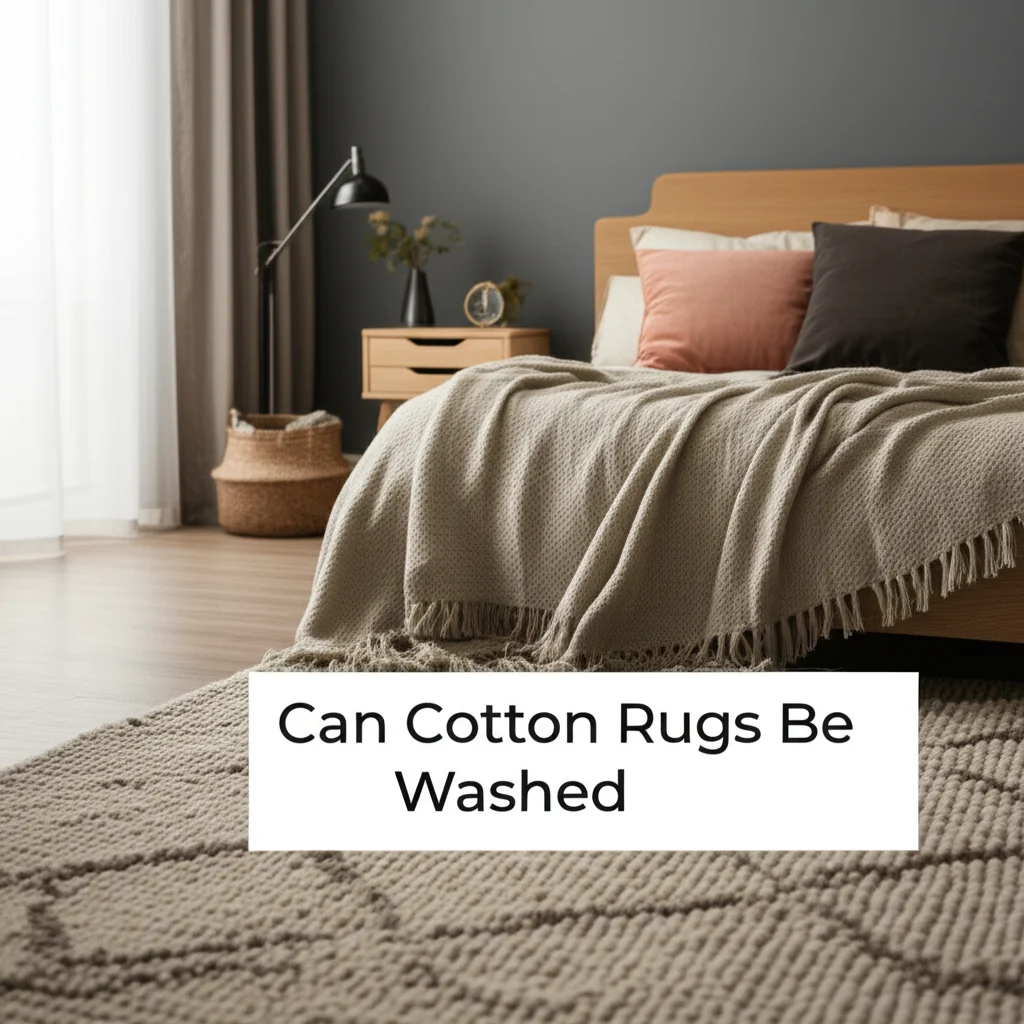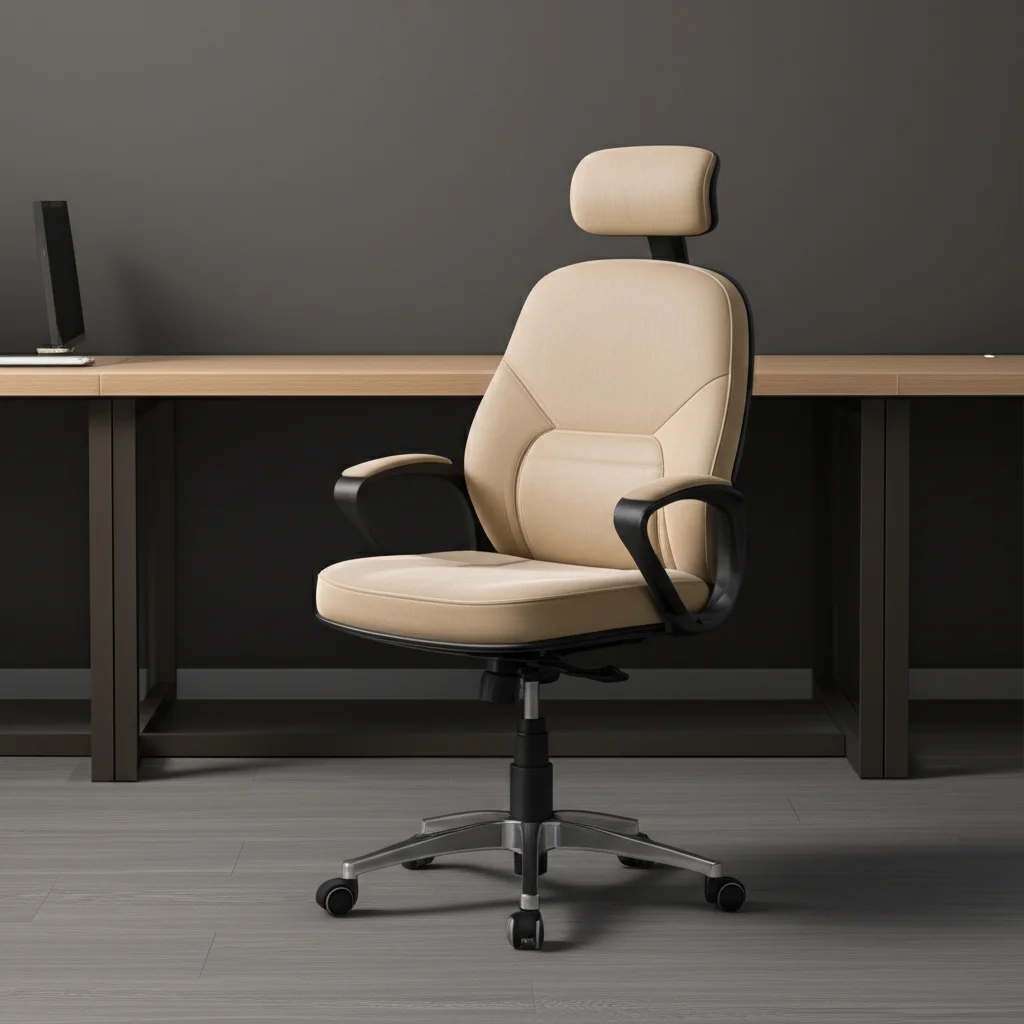· Todd Martin · Cleaning Guides · 10 min read
How To Clean A Rug With A Pressure Washer

How to Clean a Rug with a Pressure Washer: The Ultimate Guide
Pressure washing a rug is an efficient way to remove deep-seated dirt, grime, and stains that regular vacuuming can’t address. With the right technique and precautions, you can transform a dirty, stained rug into one that looks almost new again—all without expensive professional cleaning services.
Key Takeaways:
- Pressure washing can effectively deep clean outdoor and synthetic rugs
- Not all rugs are suitable for pressure washing (avoid wool, silk, and antique rugs)
- Using the proper technique and cleaning solutions prevents damage
- Allow 24-48 hours for complete drying before returning the rug to its place
- Regular maintenance extends the life of your rugs between deep cleanings
Can You Really Clean a Rug with a Pressure Washer?
Yes, you can clean certain types of rugs with a pressure washer, but not all rugs are suitable for this intensive cleaning method. Pressure washing works best on durable synthetic rugs like polypropylene, nylon, polyester, and well-constructed outdoor rugs.
The high-pressure water spray effectively penetrates deep into the fibers to remove dirt, debris, pet hair, food spills, and even tough stains. However, you need to use the correct technique and settings to prevent damage to your valuable floor coverings.
Rugs You Can Safely Pressure Wash:
- Outdoor rugs
- Synthetic area rugs (polypropylene, nylon, polyester)
- Machine-made rugs with synthetic backings
- Some indoor/outdoor carpets
- Rubber-backed bath rugs
Rugs You Should NEVER Pressure Wash:
- Wool rugs
- Silk rugs
- Antique or vintage rugs
- Hand-knotted oriental rugs
- Rugs with delicate embellishments
- Natural fiber rugs (jute, sisal, seagrass)
Equipment and Supplies You’ll Need
Before starting your rug cleaning project, gather all necessary equipment and supplies. Having everything prepared helps ensure the job goes smoothly from start to finish.
Essential Equipment:
- Pressure washer (1300-1800 PSI is ideal)
- Flat surface cleaning attachment (optional but recommended)
- Garden hose with spray nozzle
- Stiff brush or broom
- Squeegee (or a straight-edged tool)
- Cleaning solution appropriate for your rug material
- Mild dish soap or specialized rug shampoo
- 5-gallon bucket for mixing cleaning solution
- Large tarp or plastic sheeting (if cleaning on grass)
- Clothesline or drying rack
- Rubber gloves
- Eye protection
Pro tip: If you don’t own a pressure washer, you can rent one from most home improvement stores for about $50-80 per day, which is still more economical than professional rug cleaning services for multiple rugs.
Preparing Your Rug for Pressure Washing
Proper preparation is crucial for effective cleaning and preventing damage to your rug during the pressure washing process.
Step 1: Check Rug Materials
Verify that your rug is suitable for pressure washing by checking the care label or manufacturer’s information. If you’re unsure, test a small, inconspicuous corner with low pressure first.
Step 2: Dust and Vacuum
Thoroughly vacuum both sides of the rug to remove loose dirt, dust, and debris. This prevents mud formation during the washing process.
Step 3: Treat Visible Stains
Pre-treat noticeable stains with an appropriate stain remover for your specific rug material. Allow the treatment to sit according to product instructions.
Step 4: Find a Suitable Location
Choose a flat, clean surface for washing—ideally a concrete patio, driveway, or dedicated washing area with good drainage. If using grass or dirt surfaces, place a large tarp underneath to keep the rug clean.
Step 5: Set Up Your Equipment
Connect your pressure washer to a water source and electricity as needed. Choose the appropriate nozzle—a 40-degree wide-angle nozzle works best for most rugs as it provides sufficient cleaning power without damaging fibers.
The Step-by-Step Pressure Washing Process
Following a methodical process ensures thorough cleaning while protecting your rug from damage.
Step 1: Rinse the Rug First
Start by thoroughly rinsing the rug with plain water using moderate pressure. This removes surface dirt and prepares the fibers for deep cleaning.
Step 2: Apply Cleaning Solution
Mix an appropriate cleaning solution for your specific rug type:
- For synthetic rugs: 1/4 cup mild dish soap or specialized rug cleaner in 1 gallon of warm water
- For outdoor rugs: Add 1/4 cup white vinegar to the soap solution to combat mildew
- For heavily soiled rugs: Consider a specialized carpet cleaning detergent following product instructions
Apply the cleaning solution either through the pressure washer’s soap dispenser attachment or manually with a soft brush.
Step 3: Let the Cleaner Work
Allow the cleaning solution to sit for 5-10 minutes (don’t let it dry completely) to break down dirt and stains.
Step 4: Scrub if Necessary
For stubborn stains or heavily soiled areas, gently scrub with a soft brush in the direction of the pile.
Step 5: Pressure Wash
Start washing using these techniques:
- Hold the nozzle 12-18 inches from the rug surface
- Use medium pressure (1300-1600 PSI)
- Work in overlapping lines from one end to the other
- Follow the natural direction of the pile or weave
- Clean in straight lines, not circles
- Be extra gentle on edges and fringe
Step 6: Rinse Thoroughly
After cleaning, thoroughly rinse with plain water until no soap bubbles remain. Soap residue attracts dirt and can lead to faster resoiling.
Step 7: Remove Excess Water
Use a squeegee or the edge of a clean, plastic dust pan to remove as much water as possible. Work in the direction of the pile, from one end to the other.
How to Properly Dry a Rug After Pressure Washing
Proper drying is essential to prevent mold, mildew, and odors from developing in your freshly cleaned rug.
Step 1: Initial Water Removal
After squeegeeing, roll the rug with clean towels to absorb additional moisture. For thick rugs, you may need to repeat this process several times.
Step 2: Position for Drying
Place the rug flat on a clean, dry surface, preferably elevated for better air circulation. A drying rack, sawhorses, or a clothesline (for smaller rugs) work well.
Step 3: Ensure Proper Air Flow
Position the rug in a well-ventilated area, preferably outdoors on a sunny, breezy day. Make sure air can circulate around and under the rug.
Step 4: Flip Periodically
Turn the rug over halfway through the drying process to ensure both sides dry evenly.
Step 5: Check for Complete Drying
Allow 24-48 hours for complete drying, depending on climate and rug thickness. The rug should feel completely dry to the touch on both sides before returning it to your home.
Warning: Never put a damp rug back in place as this can lead to mold growth, floor damage, and unpleasant odors.
Special Considerations for Different Rug Types
Different rug materials require specific care approaches during pressure washing.
Outdoor Rugs
Outdoor rugs are typically made from synthetic materials specifically designed to withstand the elements and heavy cleaning.
- Can handle higher pressure (up to 1800 PSI)
- Adding vinegar to the cleaning solution helps combat mildew
- May need treatment with a fabric protector after cleaning
- Consider using specialized outdoor rug cleaners for persistent issues
Synthetic Area Rugs
These rugs are generally durable but require slightly more care than outdoor varieties.
- Use medium pressure (1300-1600 PSI)
- Test colorfastness in an inconspicuous area first
- Some polyester shaggy rugs may need special attention to prevent matting
- Polypropylene rugs are particularly well-suited for pressure washing
Oriental-Style Synthetic Rugs
Machine-made oriental-style rugs with synthetic materials can be pressure washed with caution.
- Use lower pressure settings (1200-1400 PSI)
- Be extra gentle with decorative borders and patterns
- Pay special attention to fringes (clean these manually if possible)
- Consider consulting specialized cleaning guides for delicate elements
Common Mistakes to Avoid When Pressure Washing Rugs
Avoid these common errors to prevent damage to your rugs during cleaning:
Using Too Much Pressure
Excessive pressure can damage rug fibers, backing, and binding. Start with the lowest effective pressure and increase gradually only if needed.
Holding the Nozzle Too Close
Keep the nozzle at least 12-18 inches from the rug surface to prevent fiber damage.
Using Hot Water
Unless specifically dealing with grease stains, use cold or lukewarm water. Hot water can shrink some materials and set certain stains.
Applying Too Much Cleaning Solution
More soap doesn’t mean better cleaning. Excess detergent is difficult to rinse out and attracts dirt.
Inadequate Drying Time
Rushing the drying process can lead to mildew and odor problems. Always ensure rugs are completely dry before returning them to use.
Using Harsh Chemicals
Strong cleaners can damage fibers and colors. Stick to mild, pH-balanced cleaners designed for rugs.
Can’t Use a Pressure Washer? Alternative Cleaning Methods
If pressure washing isn’t suitable for your rug or you don’t have access to equipment, consider these alternatives:
Manual Washing Method
- Vacuum thoroughly
- Mix mild detergent with lukewarm water
- Apply with a soft brush, working in small sections
- Rinse with a garden hose
- Remove excess water with a squeegee
- Dry completely before using
Spot Cleaning
For isolated stains or smaller rugs:
- Blot excess moisture from fresh spills
- Apply appropriate stain remover
- Gently work from the outside of the stain inward
- Rinse thoroughly with clean water
- Blot dry with clean towels
Professional Cleaning
Sometimes professional services are the best option, particularly for:
- Valuable or antique rugs
- Wool, silk, or natural fiber rugs
- Heavily soiled or damaged rugs
- Large, unwieldy sizes
Maintaining Your Rug Between Deep Cleanings
Regular maintenance extends the time between deep cleanings and preserves your rug’s appearance.
Weekly Maintenance:
- Vacuum both sides of the rug regularly
- Rotate rugs periodically to even out wear
- Address spills immediately to prevent staining
- Use appropriate rug pads to reduce dirt accumulation
Seasonal Care:
- Shake out small rugs outdoors
- Hang and beat larger rugs to remove embedded dirt
- Air rugs in sunshine occasionally (UV light has natural sanitizing properties)
- Consider applying fabric protector annually
Frequently Asked Questions
Can I use a pressure washer to clean a rug?
Yes, pressure washers are effective for cleaning durable synthetic and outdoor rugs. Use medium pressure (1300-1800 PSI) and keep the nozzle 12-18 inches from the surface. However, never pressure wash wool, silk, antique, or delicate rugs.
What kind of soap do you use to pressure wash a rug?
For most rugs, use a mild dish soap or specialized rug shampoo. Mix about 1/4 cup per gallon of water. For outdoor rugs with mildew, add 1/4 cup white vinegar. Avoid harsh detergents or bleach which can damage fibers and colors.
How do you deep clean an area rug?
Deep clean synthetic area rugs by vacuuming thoroughly, treating stains, washing with mild soap solution using a pressure washer or garden hose, removing excess water with a squeegee, and allowing 24-48 hours to dry completely. For wool rugs, use specialized wool cleaners or professional services.
Can I gurney my rug?
Yes, you can clean durable synthetic rugs with a gurney (pressure washer), but use appropriate pressure settings (1300-1800 PSI) and keep the nozzle at least 12-18 inches from the surface. Always check the rug material first, as natural fibers like wool, silk, and jute should not be pressure washed.
How do I dry a rug after pressure washing?
After squeegeeing excess water, roll the rug with clean towels to absorb moisture. Then place it flat in a well-ventilated area, preferably outdoors on a sunny day. Ensure air can circulate around and under the rug, and flip it periodically. Allow 24-48 hours for complete drying before using.
Can you pressure wash polypropylene rugs?
Yes, polypropylene rugs are excellent candidates for pressure washing as they’re synthetic, durable, and colorfast. Use medium pressure (1300-1800 PSI) and mild cleaning solutions. These rugs also dry relatively quickly compared to other materials. For stubborn stains, check specific polypropylene rug cleaning techniques.
How often should I deep clean my area rugs?
Most household rugs benefit from deep cleaning once every 12-18 months. However, high-traffic areas, homes with pets or allergies, or outdoor rugs may require cleaning every 6-12 months. Regular vacuuming and spot cleaning will extend the time between deep cleanings.
Final Thoughts
Pressure washing offers an effective, economical solution for deep cleaning suitable rugs. With the right approach, you can revitalize your floor coverings and extend their lifespan significantly. Remember that proper preparation, using appropriate pressure and cleaning agents, and thorough drying are key to successful results.
For rugs unsuitable for pressure washing, consider alternative cleaning methods or professional services. Regular maintenance between deep cleanings will keep your rugs looking their best year-round.
By following this comprehensive guide, you can confidently tackle rug cleaning tasks and enjoy fresher, cleaner rugs throughout your home. Your rugs will not only look better but will also contribute to a healthier indoor environment with reduced allergens and dust.
Want to learn more about caring for different types of floor coverings? Explore our guides on cleaning bathroom rugs, bamboo rugs, and high-pile shag rugs.




